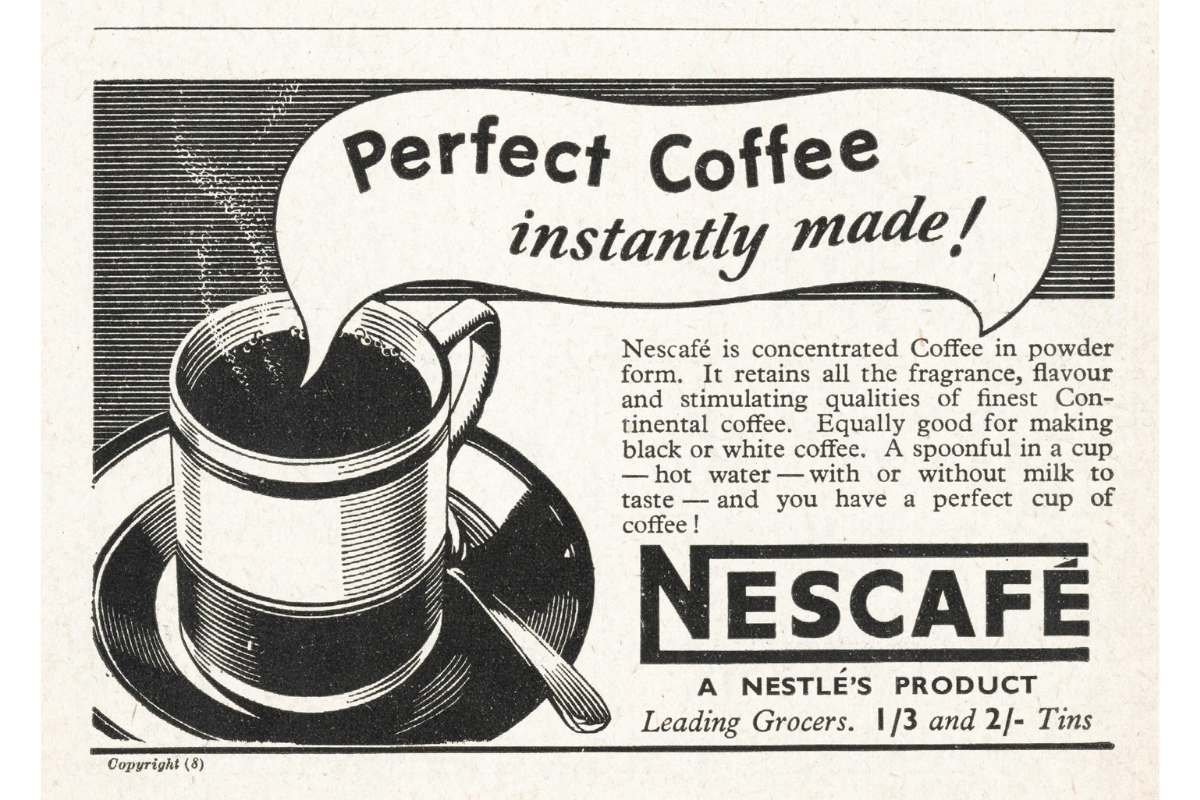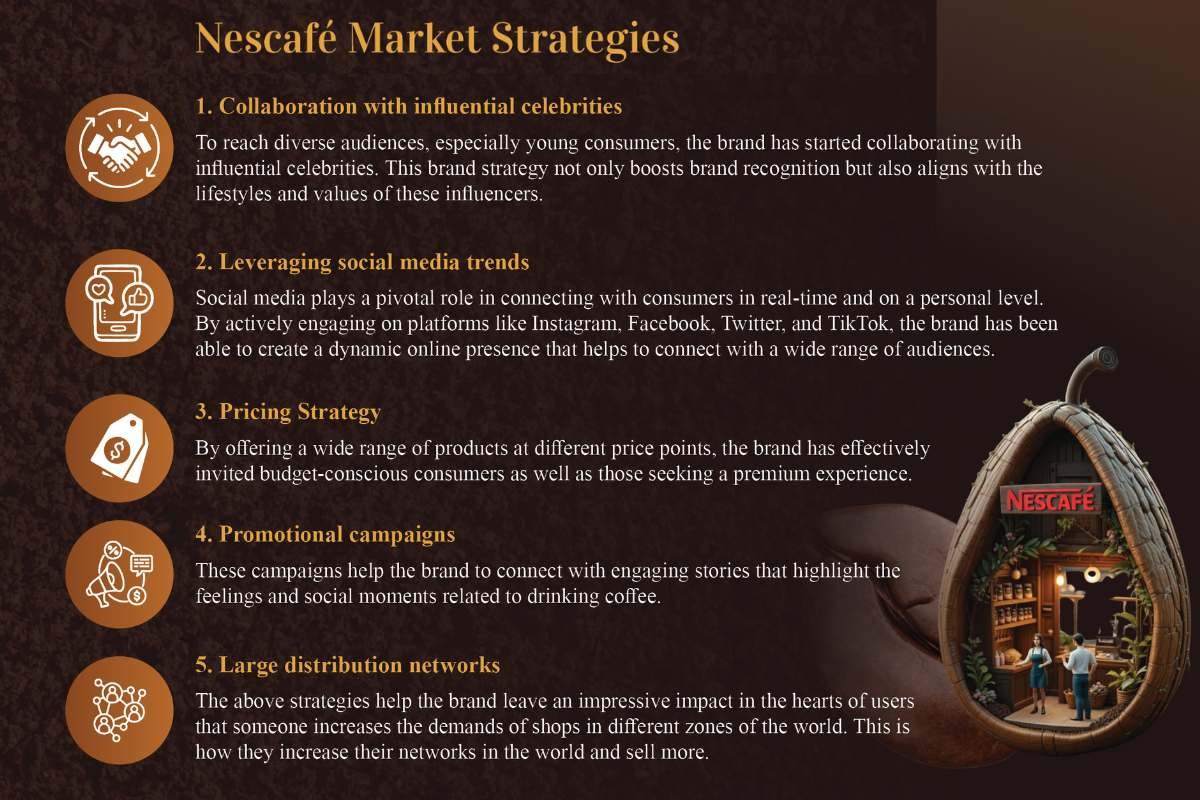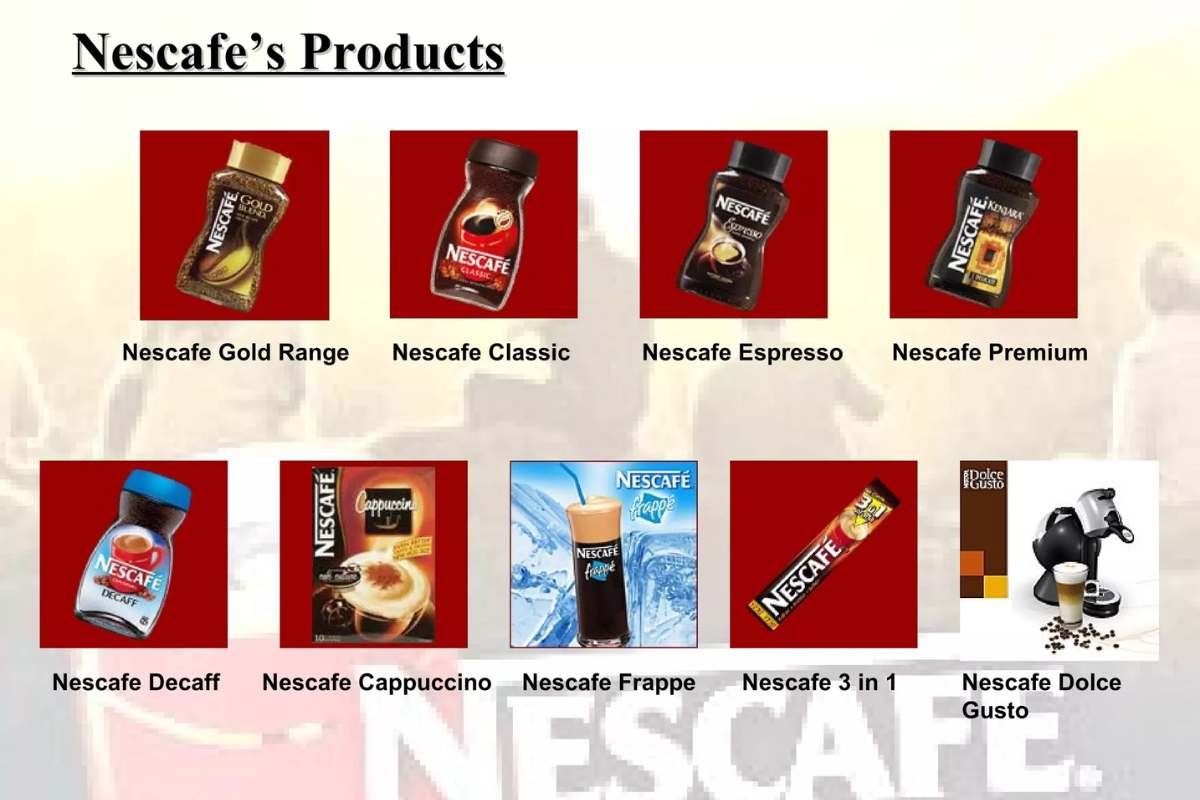What is the first coffee brand name that hits your brain when someone asks you for a cup of coffee? Is it Nescafé? No, I’m not a mind reader; I guessed it being a coffee lover and seeing the statistics of selling rates in the world. Today, Nescafé is sold in over 180 countries, with 94 billion cups consumed yearly and 5500 cups of coffee enjoyed each second. The story behind these impressive sales numbers and their rise to becoming the most beloved coffee brand is fascinating and inspiring.
In this article, you will learn about the rich history of Nescafé, its market position and global reach, marketing strategies, challenges, and interesting facts.
Brand History of Nescafé

Nescafé’s story began in the 1930s when the Brazilian government asked Nestlé to find a way to use their surplus coffee beans. Nestlé took on the challenge, and Swiss scientist Max Morgenthaler led a team to create a coffee that could be made quickly and still taste fresh. After years of work, they succeeded, and it was officially launched on April 1, 1938, in Switzerland.
The name “Nescafé” combines “Nestlé” and “café,” showing its link to both the company and coffee. At first, it was sold in Europe, but its popularity quickly spread. During World War II, it became even more known when it was given to American soldiers in their rations, helping the brand become a favorite in the U.S. and many other countries.
Since then, Nescafé has grown into one of the world’s most popular coffee brands. It offers many different types of coffee, from instant blends to premium choices, enjoyed by millions daily. Its history is about making coffee simple, quick, and accessible without losing the quality and flavor people love.
Story of Nescafé Logo
The Nescafé logo has an interesting history that reflects the brand’s journey since it started in the 1930s. The first logo was simple, with the brand name written in bold letters to highlight its identity as an instant coffee.
In the 1960s, the logo changed to include a bright red and white color scheme, representing energy and freshness. The red cup became a key part of the logo, showing the warmth and comfort of enjoying a cup of coffee. As Nescafé grew and sold its products around the world, the logo was updated to make sure it was easily recognized in different countries.
In recent years, the logo has been made simpler, focusing on clarity for both online and print use. Throughout its history, the Nescafé logo has kept a strong link to its roots while adapting to appeal to new generations of coffee lovers.
Nescafé Market Strategies
Today, the brand has adopted the market and is worldwide popular for its innovative market strategies and its ability to change according to customer needs. Here are some key strategies:

1. Collaboration with influential celebrities
To reach diverse audiences, especially young consumers, the brand has started collaborating with influential celebrities. This brand strategy not only boosts brand recognition but also aligns with the lifestyles and values of these influencers.
2. Leveraging social media trends
Social media plays a pivotal role in connecting with consumers in real-time and on a personal level. By actively engaging on platforms like Instagram, Facebook, Twitter, and TikTok, the brand has been able to create a dynamic online presence that helps to connect with a wide range of audiences.
3 Pricing Strategy
By offering a wide range of products at different price points, the brand has effectively invited budget-conscious consumers as well as those seeking a premium experience.
4. Promotional campaigns
These campaigns help the brand to connect with engaging stories that highlight the feelings and social moments related to drinking coffee.
5. Large distribution networks
The above strategies help the brand leave an impressive impact in the hearts of users that someone increases the demands of shops in different zones of the world. This is how they increase their networks in the world and sell more.
What Are the Challenges Faced by Nescafé?
Nescafé faces several challenges in the coffee market. First, it competes with many brands, including local and specialty ones, that attract customers looking for unique flavors. There is also a growing demand for healthier and sustainably sourced coffee, which means it needs to adjust its products to meet these needs. Environmental issues, like deforestation and water use in coffee farming, are becoming more important to buyers. Supply chain problems caused by climate change and political issues in coffee-producing countries can affect how much coffee is available and its price. Finally, in some areas, the market is crowded, making it harder to gain new customers.
5 Interesting Facts About Nescafé You Didn’t Know
Nescafé, introduced in 1938, stands as a pioneer in the instant coffee market, revolutionizing how coffee is enjoyed worldwide. With billions of cups consumed annually, the brand has established itself as a staple for coffee lovers, offering a diverse range of products while actively supporting sustainable practices for coffee farmers.

- The brand was introduced in 1938 and was one of the first instant coffee brands in the world, making it a pioneer in the instant coffee market.
- It is estimated that billions of cups of coffee are consumed each year, making it a staple for coffee lovers around the globe.
- The brand uses creative marketing campaigns, including catchy slogans and memorable advertisements, to connect with consumers and build loyalty.
- It has initiatives to support coffee farmers, including training programs and sustainable farming practices, helping to improve their livelihoods and promote responsible coffee production.
- Today, a wide range of coffee products, including instant coffee, coffee mixes, and coffee pods, cater to different tastes and preferences.
Conclusion
Starting from a small place to become a global leader in coffee today, Nescafé has left a big impact on coffee culture, attracting millions of drinkers with a wide range of varieties in products and a focus on quality. Its journey of growth exemplifies how the power of innovation and dedication can grow and become a global phenomenon.
Also Read: Nestlé: From Baby Formula to Global Leader


















